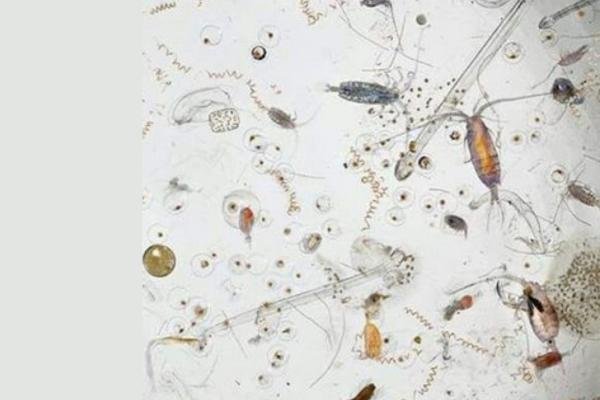
So, what’s the deal with microworms? Well, they are tiny worms that thrive in environments rich in organic matter—often serving as a food source for fish fry, but they also play vital roles in nutrient cycling and the health of their ecosystem. Each microworm has its own little part to play, just like members of a community working together to keep things running smoothly. Let’s dive in and explore how microworms interact with other microfauna in their ecosystems and why it matters.
Understanding Microworms
Microworms, often referred to as *Panagrellus redivivus*, are tiny nematodes that measure just a few millimeters in length. They thrive in decaying organic matter where they feed on bacteria and yeast. Think of them as the cleanup crew of their environment; they help break down organic materials and recycle nutrients. This is crucial not just for the microworms themselves but for the entire ecosystem around them.
Here’s the thing: microworms reproduce quickly, which means their populations can grow rapidly under ideal conditions. They live in colonies, often forming a cloudy layer in their habitat. Observing them can be like watching a tiny party happen under a microscope, where they wriggle and squiggle around in search of food. This dynamic behavior is a clear indicator of their vital role in the ecosystem.
The Microfauna Community
In the world of microworms, they don’t live in isolation. They share their environment with a variety of other microfauna. You might be wondering what exactly constitutes this community. Some common dwellers include:
- Bacteria: The unsung heroes of nutrient cycling.
- Nematodes: Other types of microscopic worms that can be herbivores or predators.
- Protozoa: Tiny single-celled organisms that can consume bacteria and other small particles.
These organisms interact with each other in many ways. Bacteria break down organic matter into simpler compounds, which microworms then feed on. In return, microworms can help control bacterial populations by consuming them—imagine a friendly referee keeping the game balanced!
Feeding Interactions
When we look at how microworms feed, it’s a fascinating web of interactions. Microworms primarily consume bacteria and yeast, meaning they rely on these small organisms to thrive. In turn, the presence of microworms can influence which types of bacteria flourish in their environment. This relationship is a prime example of a food web in action.
Moreover, as microworms feed and reproduce, they produce waste that enriches the environment with nutrients. This waste acts like fertilizer, promoting the growth of more bacteria and encouraging a healthy ecosystem. You can think of it like a cycle: microworms eat, produce waste, and contribute to the circle of life for other microorganisms.
Predation and Competition
While microworms play a positive role in their ecosystem, they’re not just sweet little helpers. They also face threats from other microfauna. For instance, some nematodes prey on microworms, keeping their populations in check. This predation is essential for maintaining balance within the community. Without it, you could end up with a microworm population explosion, throwing everything out of whack.
Competition is another factor to consider. Microworms have to share their food resources with other microbes. If bacteria are plentiful, microworms will thrive. But if other microorganisms capitalize on the same food source, microworms may struggle. This dance of competition ensures that no single species dominates the ecosystem.
Symbiotic Relationships
Interestingly, microworms can engage in symbiotic relationships with certain bacteria. Some strains of bacteria can aid in digestion or even provide additional nutrients that microworms cannot get from organic matter alone. In this way, they form a partnership where both parties benefit.
Another interesting relationship is with protozoa. While protozoa can feed on microworms, they also help control bacterial populations. So, when we look at these interactions, it becomes clear that symbiosis is a vital part of the community. Every action within this micro-world has a ripple effect, influencing other organisms and creating a cohesive environment.
The Role of Environmental Factors
The interactions involving microworms and other microfauna are heavily influenced by environmental factors. Things like temperature, moisture levels, and pH can dramatically affect community dynamics. For example, warmer temperatures might lead to faster reproduction rates in microworms and bacteria, potentially changing the community’s balance.
If the environment becomes too acidic or dry, it may negatively impact these tiny organisms. This delicate balance is essential for maintaining healthy interactions across the board. Understanding how these environmental factors affect microworms can help aquarists and ecologists maintain healthy ecosystems in aquariums or natural settings.
Why It Matters
So, you might be asking, “Why should I care about microworms and their interactions with other microfauna?” Well, the health of microworm populations can serve as a barometer for the overall health of their ecosystems. Healthy microfauna communities contribute to nutrient cycling, soil health, and water quality. They play a crucial role in larger ecosystems, influencing everything from plant growth to fish populations.
Furthermore, understanding these interactions can offer insights into aquaculture and sustainable practices. By fostering a well-balanced microfauna community, we can ensure the success of fish breeding and overall biodiversity. Just think of it as a tiny ecosystem working together to create a healthier planet.
In conclusion, microworms may be small, but their interactions within their ecosystem are profound. By understanding how they interact with other microfauna, we gain valuable insights into the delicate balances that sustain life, even at a microscopic level. Whether you’re a hobbyist or an aspiring ecologist, the world of microworms offers a window into the incredible complexities of life all around us.
